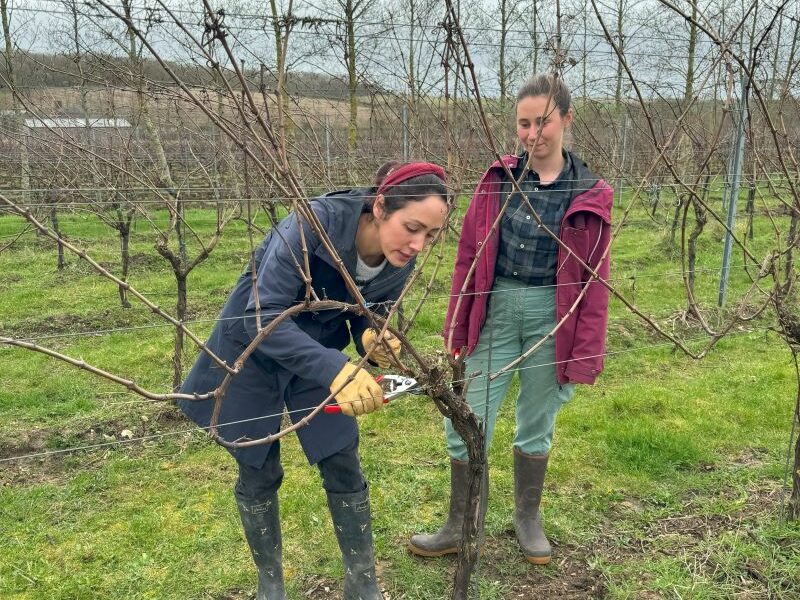In order to achieve this, we must reduce the number of buds on the vine. There are many styles of pruning which all have a different approach to bud number control. One of the main styles used in this country is guyot, or cane pruning. For this technique, we have to choose a new cane every year from the shoots that have grown during the year, cutting everything else off. We then lay this down along the fruiting wire; during the season, the new fruit-bearing shoots will grow vertically from this cane. At Saffron Grange, we leave a second insurance cane in case of frost, as well as one or two spurs with two buds each which will give us more options for pruning in the year to follow. Pruning is not just about producing a good crop for the next year: it is about ensuring the continuity of the pruning process far into the future, and prolonging the life of the vine.





